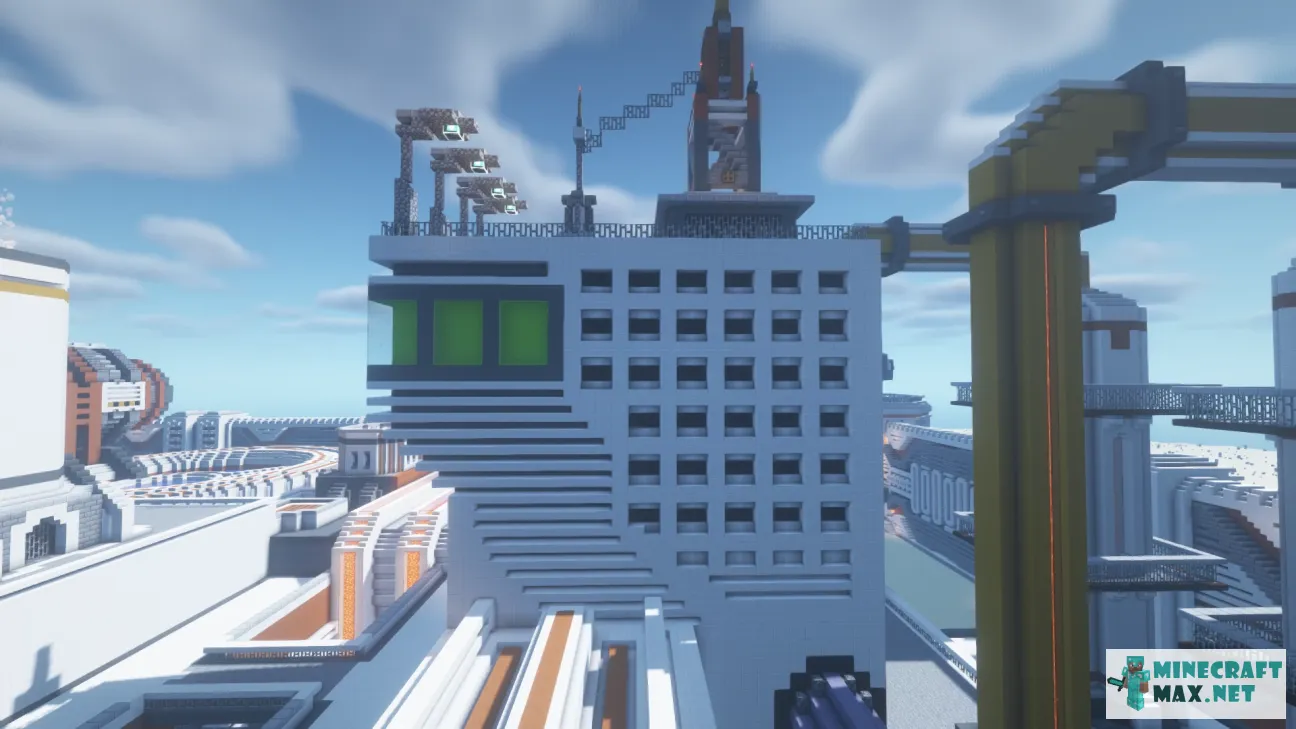For those veteran linux people, what was it like back in 90s? I did see and hear of Unix systems being available for use but I did not see much apart from old versions of Debian in use.
Were they prominent in education like universities? Was it mainly a hobbyist thing at the time compared to the business needs of 98, 95 and classic mac?
I ask this because I found out that some PC games I owned were apparently also on Linux even in CD format from a firm named Loki.
It was a struggle. You went to buy some device and you had to check it was not one of those windows-only ones. Modems were particularly bad, for example.
You had to read the how-tos and figure things out. Mailing lists and newsgroups were the only places to find some help.
You had to find the shop willing to honour warranty on the parts and not on the whole system, as they had no knowledge of Linux at all. But once you found them, you were a recurring customer so they were actually happy. You might even have ended up showing them memtest86!
You would still be able to configure the kernel and be able to actually know some of those names, compilation would take several hours but it was a learning experience.
You could interact with very helpful kernel developers and get fixes to test.
You could have been the laughing stock of your circles of friends, but within you, you knew who’d have had the last laugh.
And yes, Loki games had some titles working on Linux natively, Railroad Tycoon was one. Too bad they were ahead of the times and didn’t last much.
compilation would take several hours but it was a learning experience.
the first time i put gentoo on a g3 imac back in 2004; it took 3 days to compile everything and the computer got so hot that it warmed up the entire room like a space heater. lol
Ah, yes, Linux around the turn of the century. Let’s see…
GPU acceleration? In your dreams. Only some cards had drivers, and there were more than 2 GPU manufacturers back then, too… We had ATi, nVidia, 3dfx, Cirrus, Matrox, Via, Intel… and almost everyone held their driver source cards close to their chest.
Modems? Not if they were “winmodems”, which had no hardware controller, the CPU and the Windows driver (which was always super proprietary) did all the hard work.
Sound? AC’97 software audio was out of the question. See above. You had to find a sound blaster card if you wanted to get audio to work right.
So, you know how modern linux has software packages? Well, back then, we had Slackware, and it compiled everything gentoo style back then. In addition, everyone had a hardon for " compiling from source is better"… so your single core Pentium II had to take its time compiling on a UDMA66-connected hard drive, constrained with 32 or 64 MB RAM. Updating was an overnight procedure.
RedHat and Debian were godsends for people who didn’t want to waste their time compiling… which unfortinately was more common even so, because a lot of software was source only.
Oh, and then MP3 support was ripped out of RedHat in Version 9 iirc, the last version before they split it into RHEL and Fedora. RIP music.
As for Linux on a Mac, there was Yellowdog, which supported the PPC iMacs and such. It was decently good, but I had to write my own x11 monitor settings file (which I still have on a server somewhere, shockingly, I should throw it on github or somewhere) to get the screen to line up and work right.
Basically, be glad Linux has gone from the “spend a considerable amount of time and have programming / underhood linux knowledge to get it working” to “insert stick, install os, start using it” we have now.
In addition, everyone had a hardon for " compiling from source is better"
I mean, optimization had more of an impact on the weak CPU’s back then, no?
That only matters if there’s anything to optimize by source compilation. If the program doesn’t have optimization features in the source, it’s wated time and energy.
Slackware and Red Hat were the two distros in use in the mid 90s.
My local city used proper UNIX, and my university had
IRIXworkstationsSPARCstations and SunOS servers. We used Linux at my ISP to handle modem pools and web/mail/news servers. In the early 2000s we had Linux labs, and Linux clusters to work on.Linux on the desktop was a bit painful. There were no modules. Kernels had to fit into main memory. So you’d roll your own kernel with just the drivers you needed. XFree86 was tricky to configure with timings for your CRT monitors. If done wrong, you could break your monitor.
I used FVWM2 and Enlightenment for many years. I miss Enlightenment.
I used Enlightenment on Arch Linux for a year, in 2020-21. The PC had 4G ram and an HDD, Enlightenment was blazing fast. I could type enlightenment_start to a tty and reach a Wayland desktop under a second with 250M ram used total. E is still alive and kicking.
If done wrong, you could break your monitor.
You mean your graphic drivers, right? not your actual hardware?
(edit: oh no)
No. The wrong timing parameters could definitively break your hardware.
SGI workstations had the best GUI. That shit looked straight out of Hollywood
You could buy box copies of the original suse Linux that had manuals in the box the size of a TI graphing calculator manual.
Once you got X working everything else was cake by comparison.
Ah, Linux from scratch…
Also, hardware was… Harder back then, on Linux (mostly modems).
Beside that, software wise there was less stuff on Linux than today, so you had to check carefully you had what you needed.
But I was already a Linux user, and a linux-only user at that.
Modems were easy. Stick the serial cable in. Done.
Well, only “real” modems… Those amazing piece of crap that offloaded hardware to the windows driver where… Questionable.
And they started appearing around windows 95/98.
I remember running Slackware and having to recompile the kernel for just about any hardware you added. I configured a box to be used as a router before routers were something you could get commonly at Best Buy.
I was taking comp. sci. at university and all our work was done on Sparc workstations. Having a Unix-like machine at home was a great help during that time
Hearing your monitor squeal when you got the modelines wrong was fun.
Could you please elaborate? I’ve no idea what that sentence means, so it sounds really wild to me 😅
CRT monitors internally use an electron gun which just fires electrons at the phosporous screen (from, the back, obviously, and the whole assembly is one big vacuum chamber with the phosporous screen at the front and the electron gun at the back) using magnets to twist the eletcron stream left/right and up/down.
In practice the way it was used was to point it to the start of a line were it would start moving to the other side, then after a few clock ticks start sending the line data and then after as many clock ticks as there were points on the line, stop for a few ticks and then swipe it to the start of the next line (and there was a wait period for this too).
Back in those days, when configuring X you actually configured all this in a text file, low level (literally the clock frequency, total lines, total points per line, empty lines before sending data - top of the screen - and after sending data as well as OFF ticks from start of line before sending data and after sending data) for each resolution you wanted to have.
All this let you defined your own resolutions and even shift the whole image horizontally or vertically to your hearts content (well, there were limitations on things like the min and max supported clock frequency of the monitor and such). All that freedom also meant that you could exceed the capabilities of the monitor and even break it.
Sounds pretty cool, thanks for sharing!
This was me, you’re talking about me. 😂 In the 90’s Linux was barely getting started but slackware was probably the main distro everyone was focused on. That was the first one I ran across. This was probably late 90’s, I don’t remember when slack first came about though.
By the time the 2000’s came around, it was basically a normal thing for people in college to have used or at least tried. Linux was in the vernacular, text books had references to it, and the famous lawsuit from SCO v IBM was in full swing. There were distro choices for days, including Gentoo which I spent literally a week getting everything compiled on an old Pentium only for it to not support some of the hardware and refuse to boot.
There was a company I believe called VA Linux that declared that year to be the year of the Linux desktop. My memory might be faulty on this one.
Loki gaming was a company that specialized in porting games to Linux, and they did a good job at it but couldn’t make money. I remember being super excited about them and did buy a few games. I was broke too so that was a real splurge for me. I feel like they launched in the 90’s (late) and crashed in the early 2000’s.
the first contact i had with linux back in mid-90’s brazil was with my isp’s login terminal, which displayed some arcane text reading “red hat linux version x.x”. after that, during my father’s final years working in bank of brazil he had to deal with cobra’s homemade distro in his workstations (cobra had developed an unix in the 80s that run on m68k’s, so no surprises here). it was an absolutely esoteric system to those who only knew the dos/windows 3.11 duo, since w95 only arrived in our country in numbers only in 96. the thing really caught on during the early to mid-2000’s, with faster and cheaper adsl connections, and with them, abundant knowledge and downloads available to any script kid.
Driver support was so dicey. If you had anything even remotely not mainstream, you would be compiling your own video driver, or network driver, or basically left to figure it out for any other peripheral. So many devices like scanners and very early webcams just claimed zero Linux support at all, but you could at times find someone else’s project that might work.
I tried to switch to Linux as a desktop system several times in the late 90s but kept going back to windows because hardware support just wasn’t there yet.
Well, if
 is now,
is now, was back then.
I used it in a university course in '95, not sure what distro, but customising your shell prompt, and setting automatic timed updates for the wallpaper in tvwm certainly felt like the future. Different and electric.
We would play the linux shareware first release of quake in 12-16 player. Hiding the executable by renaming it ekauq… didn’t work, still got removed from our directories.
There were installfests at the local LUG, which were a fun way to share tips and help others.
One Linux support business existed in our town in the 90s, installing and fixing Linux boxen for businesses. Mostly home/hobby use though.
Slashdot.org was covering the majority of Linux news. Either MS FUD or the nonsense SCO lawsuit, amongst all the positive advances.
Linux conferences were a fun way to make it more real and see many of the big names behind the movement and technologies.
Installed RedHat 4 or 5.1 around 98 and then found the power of Debian. Currently running Trisquel GNU/Linux because it is a fully libre distro with no proprietary blobs or other obfuscated parts.
Many thanks to RMS and all FLOSS contributors, there is such an incredible spectrum of tools available for free use. It has been great to see the progression and expansion over the decades.
In the early 90s all the “cool kids” (for a techie definition of “cool”, i.e. hackers) at my University (a Technical one in Portugal with all the best STEM degrees in the country) used Linux - it was actually a common thing for people to install it in the PCs of our shared computer room.
Later in that decade it was already normal for it to be used in professional environments for anything serving web pages (static or dynamic) along with Apache: Windows + IIS already had a lower fraction of that Market than Linux + Apache.
If I remember it correctly in the late 90s RedHat started providing their Enterprise Version with things like Support Contracts - so beloved by the Corporates who wanted guarantees that if their systems broke the supplier would fix them - which did a lot to boost Linux use on the backend for non-Tech but IT heavy industries.
I would say this was the start of the trend that would ultimately result in Linux dominating on the server-side.
I have to say, as a Linux fan in the 90’s it was very cool to see Linux eating the whole server space, replacing older Unix while Microsoft tried desperately to grow Windows on the server market.
I was already a dev in a small IT consultancy by the end of the decade, and having ended up as “one of the guys you go to for web-based interfaces”, I did my bit pushing Linux as a solution, though I still had to use IIS on one or two projects (even had to use Oracle Web Application Server once), mainly because clients trusted Microsoft (basically any large software vendor, such as Microsoft, IBM or Oracle) but did not yet trust Linux.
That’s why I noticed the difference that Red Hat with their Enterprise version and Support Plans did on the acceptability of Linux.
My community college(1997) had a Suse linux computer lab that I learned on. It was mostly used as a networking/server and programming platform.
Loki was the leading porting developer at the time.
I got a copy of Turbolinux 6 (released in 2000) from somebody at a Hamfest, but couldn’t get it to install and run.
Two years later, I was successful in running Debian and Gentoo.







